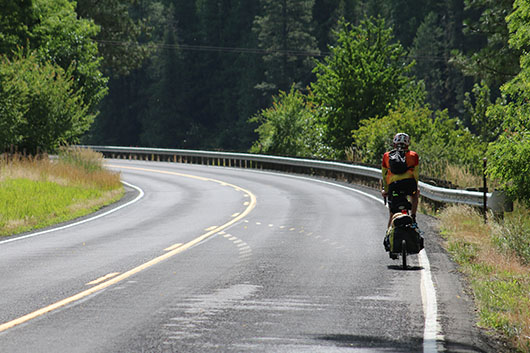US-12 winds its way through the Nez Perce-Clearwater National Forests and along the banks of the Lochsa River in north-central Idaho, serving as a scenic gateway to a range of outdoor activities from bicycling to rafting.
This summer, recreationists will see lines of orange barrels as the Idaho Transportation Department oversees the construction of $17 million in safety improvements.
Four projects to replace two bridges and repave 50 miles of the remote highway will likely delay the average traveler nearly two hours between Kamiah and the Idaho-Montana border. Given the impacts, project managers have strived from the beginning to be responsive to community concerns and to look at the corridor in its context.
As the project manager for three of the four projects, Janet Zarate has been at the forefront of brainstorming strategies to minimize effects where possible. With the help of her supervisor Joe Schacher, they’ve initiated an innovative partnership between contractors, a rafting company and ITD.
“This route is very popular among cyclists,” Zarate said. “It was important throughout the process to consider our impacts on this group, and by thinking outside of the box, I think we’ve found a way to do that.”
Zarate and Schacher worked with Knife River, the contractor of the paving operations, to come up with some creative ideas to mitigate construction impacts to this particular group.
With paving work underway, cyclists would be faced with long work zones and a highway crowded with drivers anxious to get on their way. Knife River suggested using school buses to load these two-wheeled travelers with their equipment, but Schacher posed a different solution: offer a daytime biker shuttle, operated by a local rafting company, to give them a respite by transporting them safely through the work zone.
Just last week, Three Rivers Rafting of Lowell accepted the offer.
“This partnership makes sense because at this time of year, the river doesn’t run as high, and there are fewer rafters,” Schacher said. “During their season, these companies routinely shuttle their customers up and down the river, and we didn’t see a reason for that to end this year. They have the right equipment, and we can give them an opportunity to economically benefit from construction.”
This partnership is not the first involving this project—ITD engineers have frequently met with local stakeholders, including the U.S. Forest Service as they prepare to celebrate the 50th Anniversary of the Wild and Scenic Rivers Act.
“This highway means a lot to our stakeholders, whether they access it to go hiking, fishing, biking or just to enjoy the scenery,” Schacher said. “Knowing that, we’ve worked with others to be as conscientious as possible while planning and managing construction in the corridor.”

